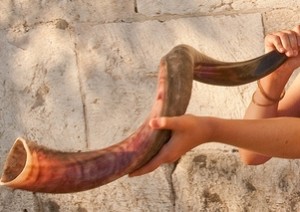Yom Kippor
Pat and I are preparing to go to Washington, DC for the International Association of Jewish genealogists (IAJGS) meeting. We’re leaving on the 13th and we are happily looking forward to great talks, meeting new friends and seeing some family. I should be making lists, spiffing up my database and deciding what sessions I wish to attend on Sunday, but instead I find myself looking backwards, lost in memories of my Jewish childhood. Since the next Carnival of Genealogy topic is about places of worship I will post this now, perhaps as the first entry.
When I was a girl my family was moderately religious. My parents attended synagogue every Friday night and often on Saturdays. My brother and I and many of our friends walked from public school to religious school two afternoons a week and our teachers tried with varying degrees of success to teach us something about many subjects,
What I remember most is Yom Kippor, the Jewish Day of Atonement. On this day adults would fast from sundown to sundown. People came and went from the synagogue all day, but everyone would be there for the reading of the Torah, for the recitation of the Kaddish, the prayer said in remembrance of the dead, and for the end of the day and the end of the fast marked by the blowing of the Shofar. The Shofar is a ram’s horn, difficult to coax sound out of, especially after a day of fasting.  It makes an eerie sound in a silent room. You can click here to hear the sound. The silence is followed by joy and cries of “shanah tovah” (have a good year or happy new year) and hugs and kisses. We would all walk home together feeling at peace and taking pleasure in each others company.
It makes an eerie sound in a silent room. You can click here to hear the sound. The silence is followed by joy and cries of “shanah tovah” (have a good year or happy new year) and hugs and kisses. We would all walk home together feeling at peace and taking pleasure in each others company.
As I grew older I became less and less involved in things religious. I married a man who is not Jewish and whose family didn’t follow a religious tradition.
As the years passed I would occasionally go to services with my mother or go to family Bar Mitzvahs and weddings, but generally speaking, I was rarely found in synagogue. When she was 90 my mother moved to an assisted living facility here in Connecticut. She joined a synagogue and with transportation provided she regularly attended services without my help. She remained mentally alert, but grew increasingly frail and finally the day came when she could not attend services without my assistance, and so I found myself in synagogue on Yom Kippor for the first time in years.
The service wound on and finally we came to the recitation of the Kaddish. Although the words of the Kaddish sanctify the name of God and do not speak of mourning it is known as the Mourner’s Prayer. At weekly Sabbath services only those who have lost a loved on that week or those who are recognizing the memorial of a death that occurred in that week recite it, but on Yom Kippor everyone recites the Mourner’s Prayer. It is traditional in many synagogues for those who still have two parents living to leave the sanctuary before the Mourner’s prayer. In every synagogue I have ever attended before the Kaddish is recited the Rabbi explains that leaving is not law, that it is in fact rooted in superstition, and that we will be remembering the six million who died in the Holocaust. They implore everyone of all ages, parents living or not to remain, and every year large numbers of those whose parents are still alive leave. Even a rabbi can’t fight tradition.
It had been years since my father’s death and I probably had been to Yom Kippor services in some of those years, but somehow, lost in childhood memories, when the Kaddish was announced I stood to leave. I was halfway out of my chair before I was hit hard by the realization that my father was gone. I sat down, overwhelmed with emotion. I watched young people leave the room and then I rose again to recite Kaddish with my mother. As I stood, a group of older people moved to the front of the room. It is a tradition in this synagogue to have survivors of the death camps lead the congregation in the recitation of the Kaddish. We all join them in remembering those who have no family to remember them. The survivors are growing old and there are fewer of them each year, but what I saw that year was a dozen healthy, vital older people walking solemnly down the aisles of the synagogue. Your heart would have to be made of stone not to be moved by this. I was reduced to tears, the survivors of course remembered and moved on, back to the good lives they had struggled to build, sharing the day with their families.
Eventually the shofar was blown and my mother and I said, “shanah tovah”, and returned to my home for a traditional light meal. I have been to Yom Kippor services sporadically in the years since that day. My mother is gone now too, but that one year remains large in my memory. I am sure it always will.
Credit for the shofar picture here

You paint a picture of a very moving service.